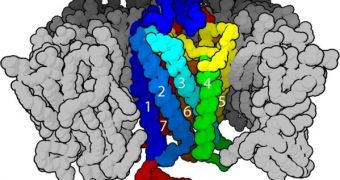Between 30 and 50 percent of all modern-day drugs are destined to affect the way a class of molecules called G protein-coupled receptors (GPRC) works. A research group featuring researchers from around the world recently managed to create a precise model of how these receptors are organized.
The study, which also provides additional details of how the molecules work, may be used to improve the actions of a vast class of chemical compounds that have thus far acted out blindly, so to speak.
While some data about the GPCR family are known, they don't even come close to the tremendous advancements the three new studies accompanying the new investigation brought. Details of the data already appear in two scientific journals.
Two of the papers were published in the September 29 issue of the top journal Nature, whereas the third was published a little earlier, in the September 12 online issue of the esteemed journal Proceedings of the National Academy of Sciences (PNAS).
Researchers at the University of Michigan (U-M), the University of California in San Diego (UCSD), and the Stanford University led the international collaboration of experts that led the investigation.
“The 800 or so known GPCR do an incredible variety of things, which is why they’re broadly considered the most important target for new drugs,” research scientist Virgil Woods Jr., MD, explains.
“But historically they’ve been very difficult to work with. We haven’t had a good grasp of their precise structure and functioning. A lot of drugs are based on targeting GPCR, but they’re hit or miss. Until recently, we have known little about how GPCR actually work at the sub-molecular level,” he adds.
The expert holds an appointment as a professor of medicine at the UCSD School of Medicine, and is also a coauthor on two of the papers. He adds that this family of molecules is predominately located within cellular membranes.
Diabetes, blindness, asthma, depression and some forms of cancer are just a few of the diseases in which these receptors have been implicated, so it's easy to see how understanding them better could lead to improvements in medical therapies and care.
“This is quite a big advance. We’ve known for awhile about some components of the GPCR signaling pathway, what they look like, but we haven’t known how the receptor actually turns G proteins on,” adds U-M Medical School associate professor of pharmacology Roger K. Sunahara, PhD, concludes.

 14 DAY TRIAL //
14 DAY TRIAL //